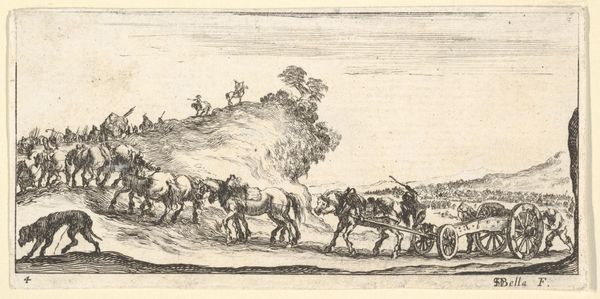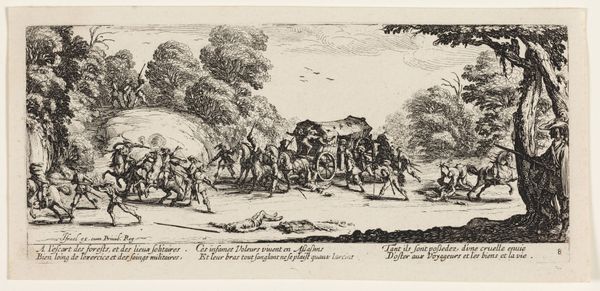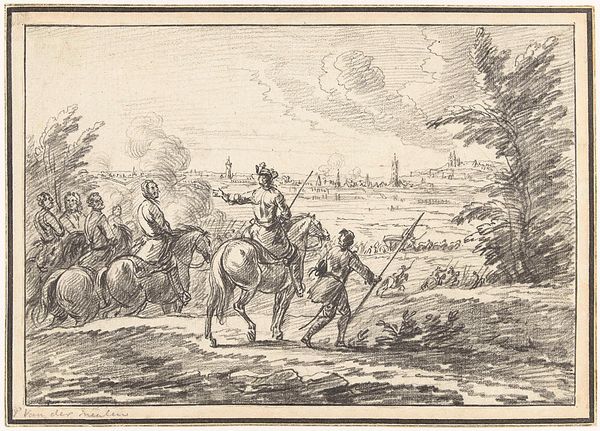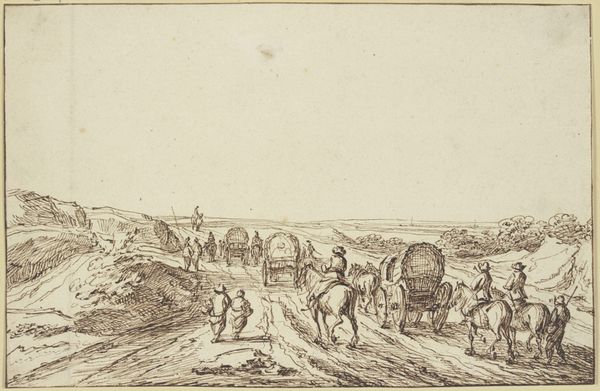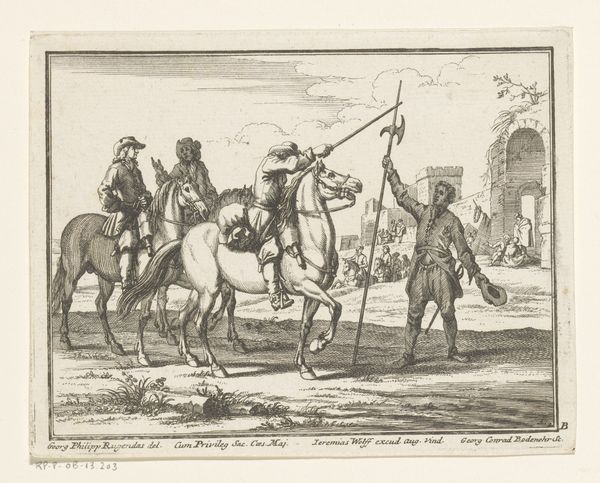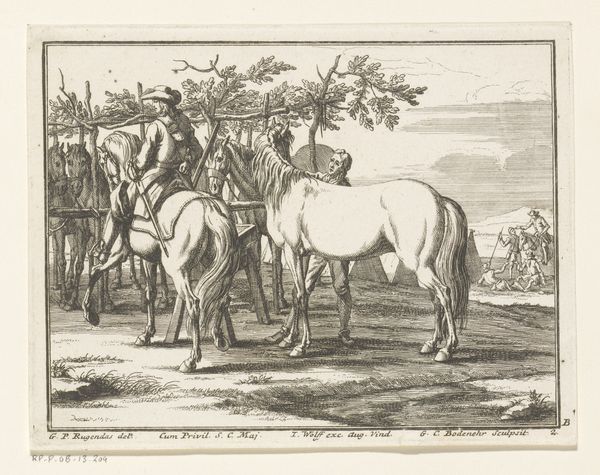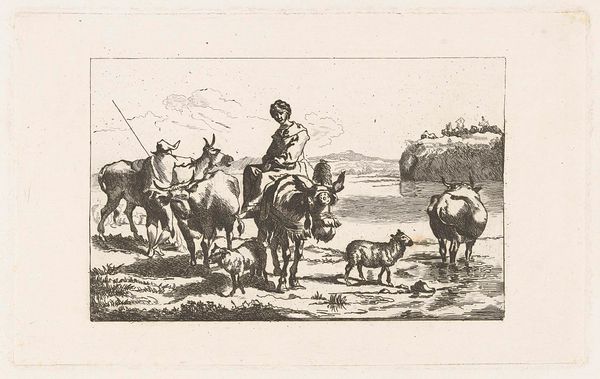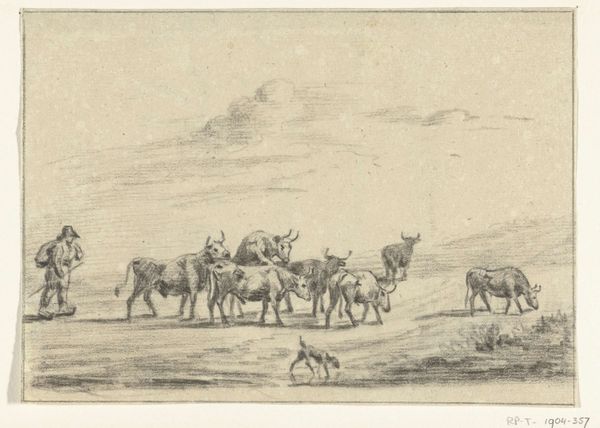
Plate 1: a horse drawn cart carrying people and goods, dead horse in the foreground, from "Various Military Caprices" (Varii capricci militari) 1636 - 1646
0:00
0:00
drawing, print, etching, ink
#
drawing
#
ink drawing
#
baroque
# print
#
etching
#
landscape
#
etching
#
figuration
#
ink
#
horse
#
history-painting
Dimensions: Sheet: 3 9/16 × 5 11/16 in. (9 × 14.5 cm)
Copyright: Public Domain
Editor: This is Plate 1 from "Various Military Caprices" by Stefano della Bella, created between 1636 and 1646. It’s an etching, and it strikes me as incredibly bleak. You see a cart pulled by horses, but in the foreground, there's a dead horse. It's quite a stark image. What stands out to you when you look at it? Curator: I think it's crucial to see this piece within the context of the Thirty Years' War. Della Bella, though commissioned by the Medici court, was witnessing and depicting the realities of conflict. The dead horse is not just an aesthetic element, it's a commentary on the cost of war, the attrition and suffering inflicted not only on people, but also the animals that support their endeavors. It challenges the glorified depictions of military campaigns prevalent at the time. What do you think the inclusion of the ordinary people on the cart suggests? Editor: Perhaps the contrast highlights the impact of war on everyday life, disrupting routines and livelihoods. It is a strong contrast with the leaders we usually see in historical painting. Curator: Precisely. Consider how prints like these circulated. They weren’t confined to palaces. They were accessible, offering a perspective on war that directly engaged with public sentiment, shaping perceptions and potentially fueling anti-war sentiments, wouldn’t you say? Editor: Definitely. I hadn't considered its accessibility and potential to shape public opinion at the time. It's interesting how art functions as both a reflection and an agent of historical forces. Curator: Absolutely. Della Bella is subtly inserting social critique into what might seem at first glance like a scene of military life, making the viewer question power dynamics and the true cost of conflict. Editor: This has totally shifted my perspective on the artwork; it's much more than just a depiction of war. Thanks! Curator: My pleasure! It’s these dialogues across time that give older works new life, wouldn’t you say?
Comments
No comments
Be the first to comment and join the conversation on the ultimate creative platform.

